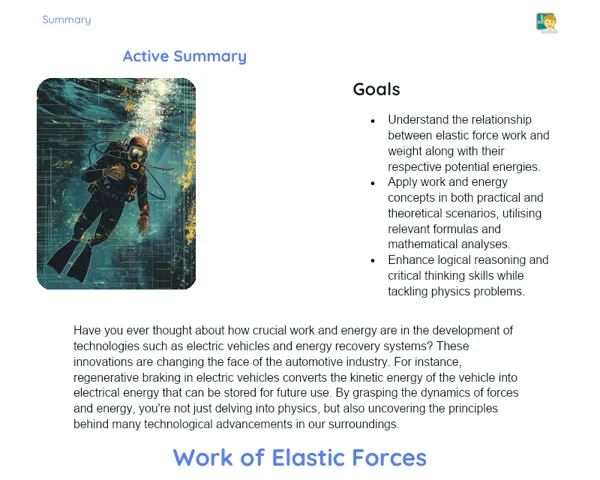Goals
1. Understand the basic concepts of electric forces and fields.
2. Use mathematical formulas to tackle real-world problems related to electric forces and fields.
3. Enhance critical thinking and problem-solving abilities in practical scenarios.
Contextualization
Electricity is an unseen energy source that powers everything from our homes and schools to industries and trains. Grasping how electric forces and fields operate is vital for understanding common devices we interact with daily, like mobile phones and electric fans. For instance, when we switch on a gadget, it’s the electric forces that set charged particles into motion, creating electric current. In this lesson, we will delve into these principles and see how they manifest in real-life applications, such as constructing an electroscope to detect electric charge.
Subject Relevance
To Remember!
Coulomb's Law
Coulomb's Law explains the interaction between two electric charges. It posits that the force between two charges is proportional to the product of their magnitudes and inversely proportional to the square of the distance separating them. The constant of proportionality is called the electrostatic constant.
-
The force is directly proportional to the product of the charges.
-
The force is inversely proportional to the square of the distance between the charges.
-
The electrostatic constant (k) is approximately 8.99 x 10^9 N·m²/C².
Electric Field
An electric field is a space around an electric charge where it exerts a force on other charges. It's depicted by field lines that indicate the direction a positive charge would feel if placed within the field.
-
The electric field is a vector quantity.
-
The direction of the electric field shows the direction of force on a positive charge.
-
The strength of the electric field decreases as you move away from the source charge.
Principle of Superposition
The Principle of Superposition states that the total electric force on a charge from a group of charges is equal to the vector sum of the forces from each individual charge. This principle simplifies the analysis of systems that include multiple charges.
-
The total force is the vector sum of all individual forces.
-
It aids in understanding complex systems with several charges.
-
It applies to both electric forces and electric fields.
Practical Applications
-
Creation of electronic devices like smartphones and tablets, which depend on principles of electric forces and fields for functionality.
-
Electrical engineering projects, like the establishment of power distribution networks utilizing electric field concepts to ensure safety and efficiency.
-
Medical equipment applications, such as defibrillators and MRI machines, that leverage electric force and field principles for treatment and diagnostics.
Key Terms
-
Coulomb's Law: It describes the force between two electric charges based on the relationship of their product and the inverse square of the distance apart.
-
Electric Field: An area around a charge where other charges experience an electric force.
-
Principle of Superposition: A principle asserting that the total force in a system of charges is the vector sum of the forces from individual charges.
Questions for Reflections
-
How might understanding electric forces and fields shape the development of future technologies?
-
In what ways can insights from Coulomb's Law and the Principle of Superposition be utilized to address practical challenges in electrical engineering?
-
What potential difficulties might arise during the construction and maintenance of electrical networks using electric forces and fields concepts?
Drawing Electric Field Lines
To deepen our grasp of electric fields, this mini-challenge invites you to sketch and interpret the electric field lines generated by different charge arrangements.
Instructions
-
Select two charge configurations: (a) Opposite charges and (b) Like charges.
-
For each setup, draw a diagram illustrating the charges and mark the electric field lines that emerge from each charge.
-
Use arrows to indicate the direction of the electric field lines, remembering that lines flow from positive to negative charges.
-
Compare the diagrams, noting the variations in the behavior of electric field lines based on the selected arrangements.
-
Compose a brief reflection on how charge distribution affects the pattern of electric field lines and its implications in electronic devices.


